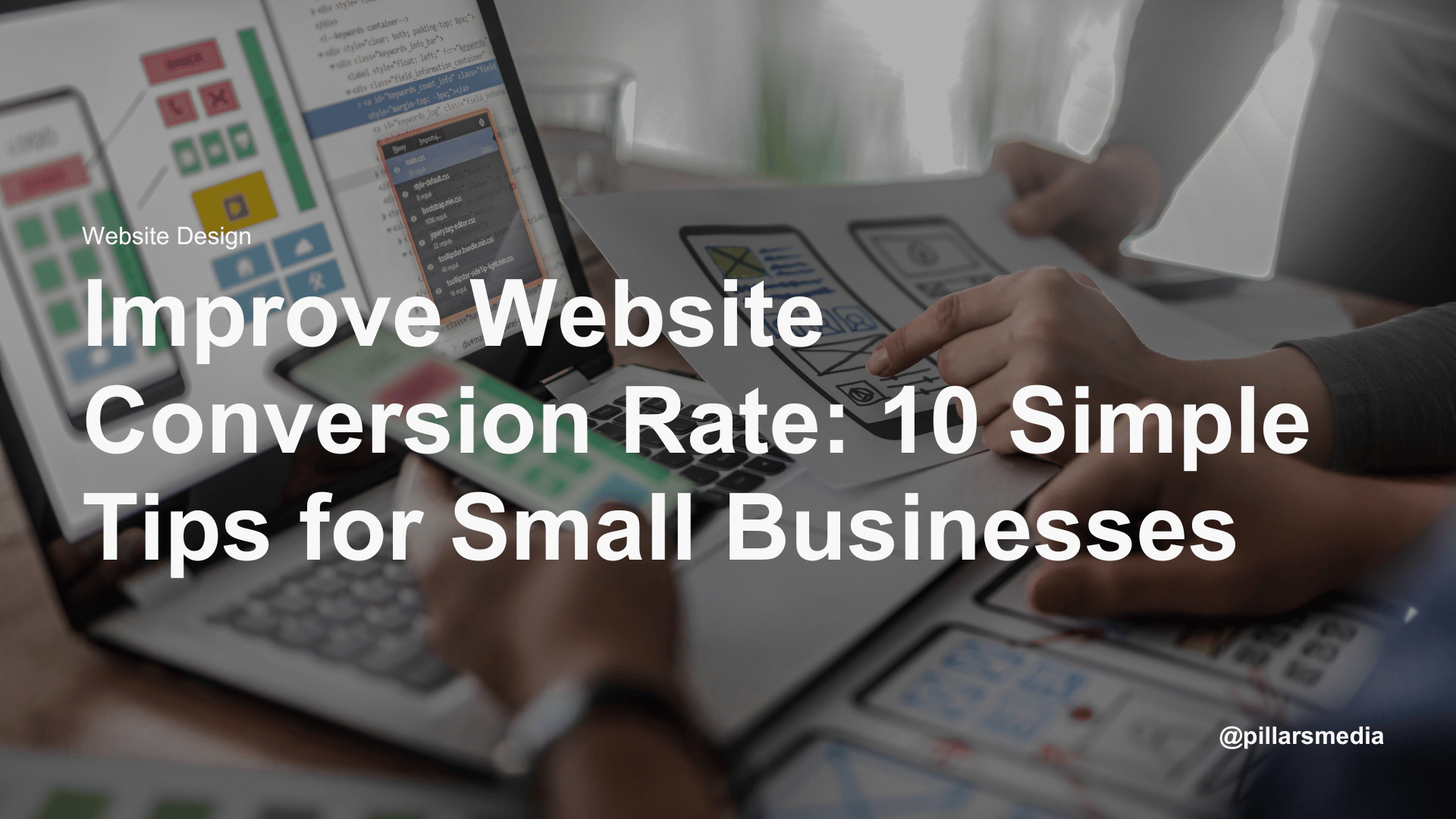Many small businesses struggle with converting website visitors into paying customers. Effective strategies to improve your website’s conversion rate can make a huge difference in your sales.
In this blog, we will offer 10 practical tips to help you optimize your website for better conversions. With these actionable insights, you can boost your website conversion rate and sales in no time!
10 simple ways to increase your website conversion rate
- Conduct a conversion audit
- Optimize your website design
- Craft persuasive copy
- Implement A/B testing
- Leverage social proof
- Offer incentives
- Streamline the checkout process
- Invest in remarketing
- Use LIVE chat support
- Optimize for mobile
1. Conduct a conversion audit
Start by performing a thorough conversion audit to pinpoint obstacles that are preventing users from completing desired actions on your site. Utilize tools such as Google Analytics to track user behavior, heatmaps to visualize where users click and scroll, and gather user feedback through surveys and session recordings. This data will help you identify specific pain points and areas for improvement.
2. Optimize your website design
Ensure your website’s design is not only aesthetically pleasing but also functional and user-friendly. Focus on creating a clean, intuitive layout with a logical flow of information. Make sure your website is fully mobile-responsive to accommodate users on all devices. Incorporate clear, compelling call-to-action (CTA) buttons and use smart whitespace to guide users toward conversion points without overwhelming them.
3. Craft persuasive copy
Develop engaging and persuasive copy that resonates with your target audience. Start with attention-grabbing headlines that address your visitors’ primary concerns or desires. Your content should clearly articulate the benefits of your offerings, address pain points, and align with your audience’s interests. Use a conversational tone and compelling language to drive engagement and motivate action.
4. Implement A/B testing
Utilize A/B testing to experiment with different versions of your web pages and identify which variations yield the best results. Test elements such as headlines, images, CTA buttons, and overall page layout. Analyze the performance of each version to determine what appeals most to your audience and optimize accordingly to enhance conversions.
5. Leverage social proof
Build trust and credibility by incorporating social proof elements on your website. Display customer reviews, testimonials, and trust badges prominently to reassure visitors of the value and reliability of your products or services. Highlight positive experiences from other users to influence potential customers and encourage them to take action.
6. Offer incentives
Attract and convert visitors by offering appealing incentives. This could include discounts, free trials, or access to exclusive content. Clearly communicate these offers on your site to entice users and provide added value that encourages them to complete a purchase or sign up.
7. Streamline the checkout process
Simplify and enhance the checkout process to reduce friction and minimize cart abandonment. This involves streamlining forms, providing options for guest checkout, and removing any unnecessary steps. Make the process as smooth and straightforward as possible to facilitate a seamless transaction experience.
8. Invest in remarketing
Re-engage visitors who didn’t convert during their initial visit by investing in remarketing strategies. Use targeted ads to remind users of your offerings and encourage them to return to your site. Tailor your remarketing efforts based on user behavior and preferences to increase the likelihood of conversion.
9. Use LIVE chat support
Enhance user experience by offering live chat support on your website. Provide instant assistance to visitors, addressing their questions and concerns in real-time. This can help resolve issues quickly, build rapport, and guide users through their decision-making process, ultimately boosting conversion rates.
10. Optimize for mobile
Ensure your website is optimized for mobile devices to deliver a seamless browsing experience across all screen sizes. A fully responsive design that adapts to different devices is crucial. Test your website’s functionality and performance on mobile to ensure that users have a smooth, engaging experience that encourages conversions.
What could cause low website conversion rate?
Identifying the reasons behind low website conversion rates is essential for improving performance. Here are five common issues and how to address them:
- Poor user experience
- Unclear value proposition
- Complex checkout process
- Lack of trust
- Ineffective Call-to-Actions (CTAs)
1. Poor user experience
A poor user experience can significantly impact your conversion rates. Visitors are likely to leave if they encounter difficulties navigating your site, experience slow load times, or use a design that doesn’t adapt well to different devices.
To improve user experience, focus on creating a clear and intuitive navigation structure, optimize your site’s load speed by compressing images and minimizing code, and ensure your design is responsive and user-friendly across all devices. Regularly test your website to identify and fix any usability issues.
2. Unclear value proposition
If visitors can’t quickly grasp the value of your product or service, they’re less likely to convert. Your value proposition should be immediately apparent on your homepage and throughout your site.
Clearly articulate the unique benefits and advantages of your offerings in a concise and compelling manner. Use prominent headlines, engaging visuals, and straightforward language to highlight how your product or service solves a problem or meets a need. Make sure this message is consistent across all pages and marketing materials.
3. Complex checkout process
A lengthy or complicated checkout process can lead to cart abandonment and lost sales. Simplify the checkout process by reducing the number of steps and requiring only essential information from users. Offer options for guest checkout to avoid forcing users to create an account.
Implement features like progress indicators to show users where they are in the process and what steps are remaining. Ensure that the checkout page is easy to navigate and free of unnecessary distractions.
4. Lack of trust
Trust is a crucial factor in converting visitors into customers. If your website appears insecure or untrustworthy, visitors may hesitate to complete a transaction. To build trust, incorporate security features such as SSL certificates to encrypt user data, display trust badges or certifications, and provide clear contact information.
Showcase customer reviews, testimonials, and case studies to demonstrate credibility and reliability. Additionally, ensure that your site’s design looks professional and that all content is accurate and up-to-date.
5. Ineffective Call-to-Actions (CTAs)
Call-to-actions (CTAs) play a vital role in guiding users toward conversion actions. CTAs that are hard to find, vague, or unappealing can lead to missed opportunities. Design CTAs that stand out visually and use action-oriented language to convey what users will gain by clicking.
Place CTAs strategically throughout your site where they naturally align with user goals and intentions. Test different CTA styles, positions, and messages to determine which combinations drive the highest engagement and conversion rates.
Importance of improving website conversion rate
Boosting your website conversion rate is crucial for several key reasons:
- Increased revenue
- Better ROI on marketing spend
- Enhanced user experience
- Competitive advantage
- Customer insights
- Scalability
1. Increased revenue
Higher conversion rates directly lead to more sales, which translates into increased revenue. When more visitors to your site take the desired actions—whether that’s making a purchase, signing up for a newsletter, or filling out a contact form—you see a direct impact on your bottom line. By improving conversion rates, you maximize the return on the traffic you already receive, which can significantly boost your overall revenue.
2. Better ROI on marketing spend
Improving your conversion rate enhances the return on investment (ROI) for your marketing efforts. By optimizing your website to convert more of your existing traffic, you get more value from your ad spend without needing to increase your budget. This means that every dollar spent on advertising yields a higher number of conversions, making your marketing campaigns more cost-effective and efficient.
3. Enhanced user experience
Optimization for conversions often goes hand in hand with an improved overall user experience. When you focus on making your website more user-friendly—by streamlining navigation, speeding up load times, and ensuring mobile responsiveness—you create a better experience for all visitors. This not only helps in converting more users but also increases satisfaction and engagement, which can lead to repeat business and positive word-of-mouth.
4. Competitive advantage
Achieving higher conversion rates can provide a significant edge over your competitors. In a crowded market, a well-optimized website that effectively converts visitors into customers sets you apart from those who have less effective online strategies. By outperforming your competitors in conversion rate, you can capture a larger share of the market and position your brand as a leader in your industry.
5. Customer insights
The process of conversion rate optimization (CRO) offers valuable insights into your customers’ behavior and preferences. By analyzing how visitors interact with your site and identifying where they drop off, you gain a deeper understanding of what drives their decisions. This information can inform not just your website improvements, but also your broader marketing strategy and product development efforts, leading to more targeted and effective initiatives.
6. Scalability
A website that is well-optimized for conversions can better handle increased traffic and continue to perform effectively as you grow. This scalability ensures that as your business attracts more visitors, your site remains capable of converting them efficiently. Investing in conversion optimization prepares your website to manage higher volumes of traffic without sacrificing performance or user experience.
Conclusion
Improving your website conversion rate is crucial for achieving your business goals. By implementing the strategies outlined in this post, you can enhance user experience, build trust, and drive more conversions.
Start optimizing your website today to see tangible results and outshine your competition.
For personalized conversion rate optimization services, reach out to us at Pillars Media.

